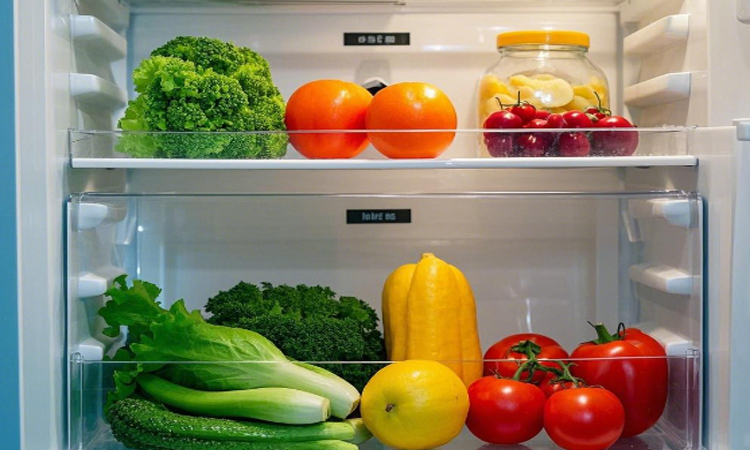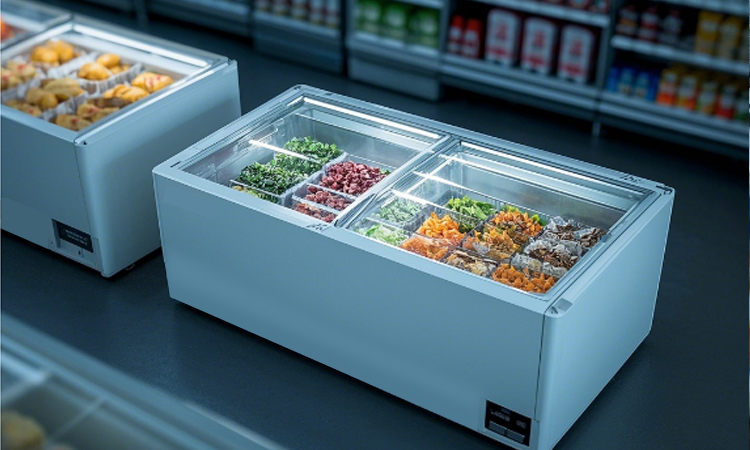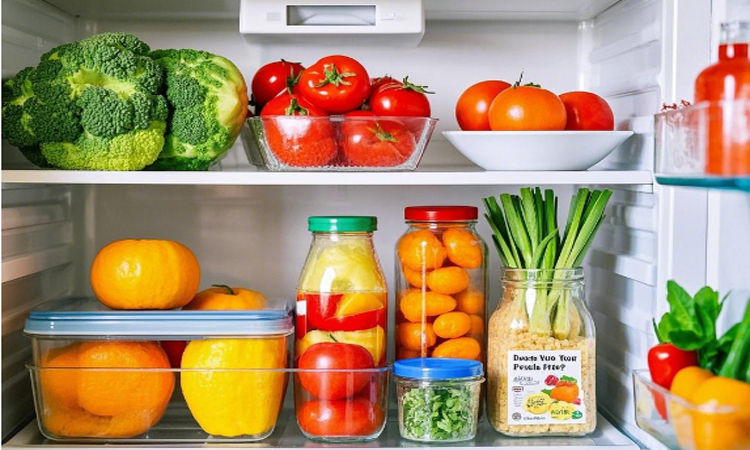
Implementing a comprehensive commercial refrigeration maintenance program is essential for ensuring equipment reliability, food safety, and operational efficiency. Common refrigeration equipment includes commercial countertop mini display fridges, refrigerators, beverage cabinets, etc.,Strategic preventive refrigeration care reduces unexpected breakdowns, extends equipment lifespan, and minimizes costly emergency repairs. This detailed guide provides the framework for establishing effective commercial cooling maintenance procedures that protect your investment and maintain consistent performance.

1. Fundamentals of Preventive Maintenance
1.1 Understanding System Components
Key Refrigeration Components
Commercial refrigeration maintenance requires knowledge of system elements:
Primary Components:
- Compressor: Heart of the refrigeration system
- Condenser Coils: Heat rejection components
- Evaporator Coils: Heat absorption elements
- Expansion Valve: Refrigerant flow control
- Refrigerant Lines: System circulation pathways
Control Systems:
- Thermostats: Temperature control devices
- Defrost Controls: Ice removal automation
- Safety Controls: System protection mechanisms
- Monitoring Systems: Performance tracking tools
- Alarm Systems: Alert and notification devices
System Interaction Principles
Refrigeration equipment servicing considers component relationships:
Refrigeration Cycle:
- Compression: Refrigerant pressure and temperature increase
- Condensation: Heat rejection to ambient air
- Expansion: Pressure and temperature reduction
- Evaporation: Heat absorption from product area
- Return: Refrigerant returns to compressor
1.2 Maintenance Program Structure
Maintenance Frequency Schedule
Professional refrigeration maintenance timing guidelines:
Daily Tasks (5-10 minutes):
- Visual equipment inspection
- Temperature monitoring and recording
- Basic cleaning and housekeeping
- Operational status verification
- Issue identification and reporting
Weekly Tasks (30-60 minutes):
- Deep cleaning procedures
- Component inspection
- Performance monitoring
- Filter maintenance
- Documentation updates
Monthly Tasks (2-4 hours):
- Comprehensive system inspection
- Electrical system checking
- Calibration verification
- Professional assessment
- Preventive component replacement
Quarterly Tasks (4-8 hours):
- Professional service calls
- Refrigeration system analysis
- Major component evaluation
- Performance optimization
- System upgrades and modifications
2. Daily Maintenance Procedures
2.1 Visual Inspection Protocol
Equipment Condition Assessment
Begin daily preventive refrigeration care with systematic inspection:
Exterior Inspection:
- Physical Damage: Check for dents, scratches, or corrosion
- Door Alignment: Verify proper door closure and sealing
- Control Panel: Confirm display function and settings
- Ventilation: Ensure adequate airflow around equipment
- Cleanliness: Assess general cleanliness and appearance
Interior Inspection:
- Product Condition: Monitor food quality and temperature
- Ice Buildup: Check for excessive frost accumulation
- Drainage: Verify proper condensate removal
- Lighting: Confirm adequate interior illumination
- Air Circulation: Ensure unobstructed airflow
Temperature Monitoring
Commercial cooling maintenance temperature protocols:
Monitoring Requirements:
- Record temperatures every 2-4 hours during operation
- Document deviations beyond acceptable ranges
- Maintain HACCP compliance documentation
- Calibrate thermometers monthly
- Set alarm thresholds for temperature excursions
Critical Temperature Ranges:
- Fresh Food Storage: 35-38°F (2-3°C)
- Frozen Food Storage: -10°F to 0°F (-23°C to -18°C)
- Ice Cream Storage: -5°F to -10°F (-20°C to -23°C)
- Produce Storage: 32-40°F (0-4°C)
2.2 Operational Verification
System Performance Checks
Commercial refrigeration maintenance operational assessment:
Compressor Operation:
- Listen for unusual noises or vibrations
- Check compressor mounting and isolation
- Verify proper electrical connections
- Monitor operating pressures (if accessible)
- Document run time and cycling patterns
Control System Function:
- Test digital displays and controls
- Verify alarm system operation
- Check defrost cycle timing
- Test safety shutdown systems
- Validate temperature set points
3. Weekly Maintenance Tasks
3.1 Deep Cleaning Procedures
Interior Sanitization
Weekly refrigeration equipment servicing cleaning requirements:
Cleaning Process:
- Product Removal: Safely relocate all products
- Power Down: Disconnect electrical supply safely
- Component Removal: Take out removable shelves and parts
- Initial Cleaning: Remove loose debris and spills
- Detergent Wash: Apply food-safe cleaning solutions
- Sanitizing: Use EPA-approved sanitizers
- Rinse and Dry: Thorough rinsing and air drying
Cleaning Solutions:
- Mild Detergent: Non-abrasive, food-safe formulations
- Sanitizer: EPA-registered food contact sanitizers
- Glass Cleaner: Ammonia-free, streak-free cleaners
- Stainless Steel Cleaner: Specialized metal surface cleaners
Condenser Coil Maintenance
Critical professional refrigeration maintenance task:
Cleaning Frequency:
- High-dust environments: Weekly cleaning
- Normal conditions: Bi-weekly cleaning
- Clean environments: Monthly cleaning
- Outdoor units: More frequent cleaning needed
Cleaning Procedure:
- Safety First: Disconnect power and follow lockout procedures
- Access Coils: Remove protective covers and panels
- Initial Cleaning: Brush away loose debris
- Vacuum Cleaning: Use soft brush vacuum attachment
- Chemical Cleaning: Apply commercial coil cleaner
- Rinse System: Thoroughly rinse (if water-safe)
- Complete Drying: Ensure complete drying before reassembly
3.2 Component Inspection
Electrical System Check
Commercial cooling maintenance electrical evaluation:
Inspection Points:
- Electrical Connections: Check for loose or corroded connections
- Wire Condition: Inspect for wear, damage, or overheating
- Control Boards: Verify proper operation and programming
- Safety Devices: Test GFCI and safety switches
- Grounding: Verify proper electrical grounding
Safety Procedures:
- Always disconnect power before electrical work
- Use qualified electricians for complex issues
- Follow proper lockout/tagout procedures
- Use appropriate testing equipment
- Document all electrical maintenance
Door and Seal Maintenance
Commercial refrigeration maintenance access system care:
Door System Inspection:
- Alignment: Verify proper door alignment and operation
- Hardware: Check hinges, handles, and locking mechanisms
- Glass Condition: Inspect for cracks or stress damage
- Operation: Test smooth opening and closing
- Safety Features: Verify safety releases and locks
Seal Assessment:
- Visual Inspection: Look for tears, gaps, or hardening
- Flexibility Test: Check seal memory and flexibility
- Replacement Planning: Schedule replacement before failure
- Performance Test: Verify seal effectiveness
- Documentation: Record seal condition and replacement dates
4. Monthly Comprehensive Maintenance
4.1 System Performance Analysis
Refrigeration System Evaluation
Refrigeration equipment servicing monthly assessment:
Performance Metrics:
- Temperature Consistency: Analyze temperature log data
- Energy Consumption: Monitor electricity usage trends
- Cycle Analysis: Track compressor run times and cycles
- Defrost Performance: Evaluate defrost effectiveness
- System Efficiency: Calculate performance ratios
Component Testing:
- Refrigerant Pressures: Check operating pressures
- Electrical Parameters: Test voltage, amperage, and power factor
- Temperature Sensors: Calibrate and verify accuracy
- Control Functions: Test all automated systems
- Safety Systems: Verify all safety controls
Preventive Component Replacement
Professional refrigeration maintenance replacement schedule:
Regular Replacement Items:
- Air Filters: Every 1-3 months depending on conditions
- Water Filters: Every 6 months or per manufacturer
- Belts and Gaskets: Annual inspection and replacement
- Electrical Contacts: Replace when pitted or worn
- Refrigerant Driers: Replace during system service
4.2 Calibration and Testing
Temperature System Calibration
Commercial cooling maintenance accuracy verification:
Calibration Process:
- Reference Standards: Use NIST-traceable equipment
- Multi-Point Testing: Test across operating range
- Adjustment Procedures: Follow manufacturer protocols
- Documentation: Record all calibration activities
- Certification: Obtain calibration certificates
Performance Testing:
- Temperature Mapping: Map temperatures throughout space
- Recovery Testing: Measure temperature recovery rates
- Stability Testing: Monitor long-term stability
- Alarm Testing: Verify alarm set points and responses
- Load Testing: Test performance under various loads
5. Quarterly Professional Service
5.1 Comprehensive System Service
Professional Maintenance Tasks
Professional refrigeration maintenance quarterly service:
Refrigeration System Analysis:
- Refrigerant Analysis: Check levels, purity, and condition
- Oil Analysis: Test compressor oil quality
- Leak Detection: Electronic leak testing
- Pressure Testing: Comprehensive pressure analysis
- Performance Testing: Capacity and efficiency measurement
System Optimization:
- Refrigerant Recovery: Proper handling procedures
- System Evacuation: Remove air and moisture
- Refrigerant Charging: Precise charge adjustment
- Control Optimization: Fine-tune control settings
- Performance Enhancement: Implement efficiency improvements
Documentation and Compliance
Commercial refrigeration maintenance record keeping:
Service Documentation:
- Service Reports: Detailed findings and actions
- Parts Replacement: Document all component changes
- Performance Data: Record efficiency and capacity measurements
- Recommendations: Future maintenance and upgrade suggestions
- Warranty Status: Track warranty coverage and claims
Compliance Requirements:
- Regulatory Compliance: Meet all applicable regulations
- Safety Standards: Maintain safety certifications
- Environmental Requirements: Proper refrigerant handling
- Insurance Requirements: Maintain coverage requirements
- Manufacturer Requirements: Follow warranty procedures
6. Cost-Benefit Analysis
6.1 Preventive vs. Reactive Maintenance
Investment Comparison
Preventive refrigeration care financial analysis:
Preventive Maintenance Costs:
- Annual Investment: $800-$2,500 per unit
- Labor Costs: Regular technician time
- Parts Costs: Scheduled component replacement
- Training Costs: Staff education and certification
- Documentation Costs: Record keeping and compliance
Reactive Maintenance Costs:
- Emergency Repairs: $1,000-$5,000 per incident
- Downtime Costs: Lost product and business
- Rush Service: Premium labor and parts costs
- Product Loss: Spoilage during equipment failure
- Compliance Issues: Regulatory violations and fines
Return on Investment
Commercial cooling maintenance ROI calculation:
Quantifiable Benefits:
- Energy Savings: 15-30% reduction in energy consumption
- Extended Lifespan: 40-60% longer equipment life
- Reduced Repairs: 70-80% fewer emergency service calls
- Improved Reliability: 95%+ uptime achievement
- Compliance Assurance: Avoided violations and penalties
Typical ROI Metrics:
- Payback Period: 12-24 months for preventive programs
- Annual Savings: $2,000-$8,000 per unit
- Avoided Costs: $5,000-$15,000 in emergency repairs
- Efficiency Gains: 20-35% operational improvement
7. Training and Implementation
7.1 Staff Training Requirements
Training Program Components
Refrigeration equipment servicing education needs:
Basic Training:
- Safety Procedures: Electrical and chemical safety
- Daily Procedures: Routine maintenance tasks
- Documentation: Proper record keeping
- Quality Standards: Performance expectations
- Emergency Procedures: Response protocols
Advanced Training:
- System Knowledge: Refrigeration principles
- Troubleshooting: Problem diagnosis techniques
- Preventive Procedures: Advanced maintenance tasks
- Compliance Requirements: Regulatory knowledge
- Technology Updates: New equipment features
Ongoing Education
Professional refrigeration maintenance development:
Continuing Education:
- Manufacturer Training: Equipment-specific procedures
- Industry Certification: Professional credentials
- Safety Updates: Current safety protocols
- Technology Advancement: Emerging technologies
- Performance Reviews: Regular competency assessment
Implementing comprehensive commercial refrigeration maintenance programs is essential for equipment reliability, food safety, and operational efficiency. Strategic preventive refrigeration care reduces costs, extends equipment life, and ensures consistent performance. Develop systematic commercial cooling maintenance procedures that combine daily attention with professional service to maximize your refrigeration investment.
Remember that effective refrigeration equipment servicing requires commitment to training, documentation, and continuous improvement. Work with qualified professional refrigeration maintenance providers to develop programs tailored to your specific needs and operational requirements. The investment in preventive care will deliver substantial returns through improved reliability, efficiency, and compliance.





